It Follows: Murder v.s. Martyr and the Death of Youth
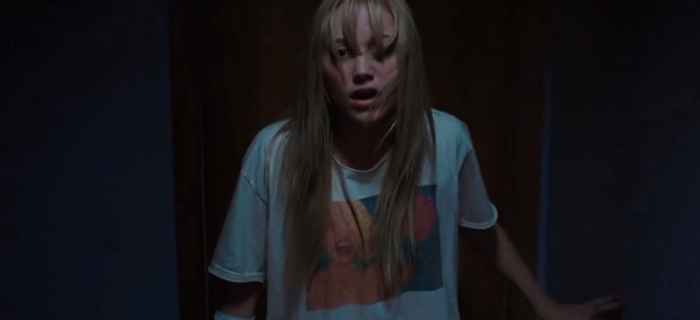
The characters’ individual narratives in It Follows (David Robert Mitchell, 2014), appear to be unified, however a deeper reading of the film proves this to be false. What is scary about this film depends on the perspective one adopts. First is the perspective of the “unaffected” teenagers who are never cursed by the creature. Then there are the “affected” teenagers who are not so lucky. The narrative of the unaffected teenagers is based on the universal fears of mortality and adulthood. On the other hand, the narrative of the affected teenagers relies on personal fears and past trauma. The dual narrative of It Follows, through the creatures unearthing of “surplus repression,” (a term coined Herbert Marcuse and used by Robin Wood to represent societal fears buried in the psyche) in the film’s suburban teenagers, displays youth as something to both reject and cherish.
The unaffected in It Follows experience the shallow fear of impending death that clouds the creatures deeper capabilities of terror. Paul, Yara, and Kelly (Jay’s sister), are never cursed by the creature. However, their fears and feelings towards the creature are familiar because the film often shows this perspective. The creature is invisible to the unaffected. This limits their fear of the creature to what it is capable of doing rather than what it looks like. The film rarely shows the creature’s physical appearance. This leans comprehension towards the perspective of the unaffected. Near the film’s end, Yara reads a quote from Dostoevsky’s The Idiot saying: “And the most terrible agony may not be in the wounds themselves, but in knowing for certain that within an hour, then within ten minutes, then within half a minute, and now at this very instant your soul will leave your body and you will no longer be a person, and that this is certain, the worst thing is that it is certain.” This quote represents the fear that plagues these teenagers: mortality. Both the affected and unaffected experience this, but in surprisingly different ways. The unaffected receive fear from realizing death’s inevitability and focusing it into their limited youth. On the other hand, the affected receive fear from their impending physical death which is presented as the worst memories of their youth. This quote proves that the main fear of the unaffected is not dying, but the realization and knowledge of an inevitable death.
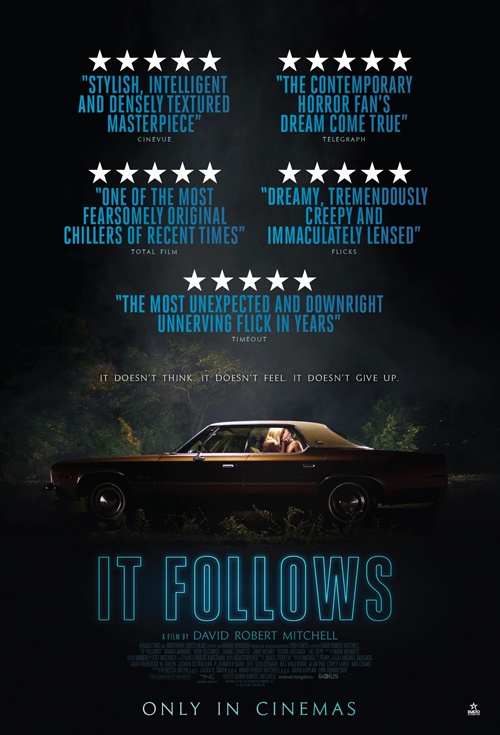
This fear of mortality is embodied as the creature and, more specifically, the teenagers’ feelings towards strangers. This is done by framing everything within Suburbia. A portion of the fear experienced by the unaffected is characterized as the idea of the creature since they cannot see it. However, the physical characterization of their fear is people, specifically the concepts of strangers and strange lands. To set this up, the film focuses solely on the teenagers. At no point in the movie is the face of a parent shown in focus or near the camera. This separates the teenagers lives collectively from their family lives and ultimately secludes them into a suburban bubble. In a scene, Jay and Kelly are walking home when they pass a rural household and hear screaming and domestic conflict within. They both seem indifferent and continue walking showing that they naturally avoid domestic instability. This is most likely because they have repressed it. Yara later recalls her mom telling her not to go past eight mile and not to leave the suburbs because it is dangerous. Jay says her mom told her the same and they both talk about how misleading that was while they walk through a non-affluent neighborhood. This shows their childhood repression of understanding society outside of the suburbs while also putting the blame on the parents. In Robin Wood’s essay, “The American Nightmare: Horror in the 70’s,” he establishes “the other” as the force that threatens normality. The other is the creature in this case. He also states other cultures, ethnic groups, and ideologies as forms the other can take. Considering this essay, the film digs up repressed feelings towards these groups and shapes them as the idea of the creature.
The movies that the teenagers are watching also point to this repressed suburban childhood. The characters are seen watching Killers From Space which is about aliens invading Earth. They are later watching another old sci-fi film where men in spacesuits are killing aliens. This imagery of foreign invaders parallels their feelings towards strangers which intensifies the fear of the creature that plagues their friend and which they cannot see. The teens’ recognition of their secluded childhood’s paired with these subtle images of invasion display xenophobia as one of their repressed fears.
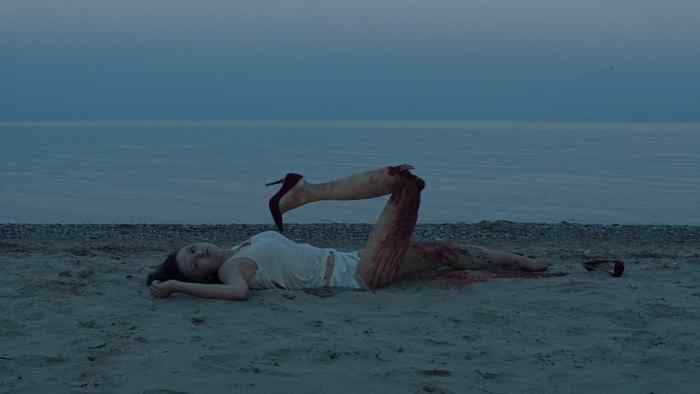
The unaffected teenagers’ fear of mortality is further expressed as the fear of adulthood and losing youth. The teens appear sheltered in the film. This is seen through their childish games like old maid, their lack of alcohol, and immature acts like farting on each other. While Yara, Paul, and Kelly sit on a porch, they are seen playing the card game Old Maid. The camera zooms in on the Old Maid card specifically. This is important because the goal of the game is to not get the Old Maid card. All of the cards are youthful happy people, but the old decaying lady means you lose. This directly parallels their fear of growing old which they associate with leaving home. Then, while at the hospital, a scene pans over several rooms showing different groups of people. Each room either contains an adult couple, a child with their family, or an old man; no teenagers. The shot ends on Greg and Jay having sex. This, with the card game and their mannerisms, creates a space between them and adulthood.
The music of the film nuances this focus on youth. The soundtrack is an homage to the 1980’s composed of synthetic sounds. In the scenes without the creature, the music is treble based and sounds like something a young person would listen to. One could expect a horror film to have an orchestral score or something dark, but this soundtrack is lighter. When the creature is on screen, the music does not change from synth and, in most cases, the bass barely increases. The music retains the synth but distorts it heavily. This strengthens the frame that the film is placing around the age of the characters.
In the film, the comfort of youth is clearly separated from the dangers of adulthood by the colors red and blue. Blue symbolizes the safety of their childhoods while red is the foreign uncertainty of desire, sex, and adulthood. Greg always wears blue and his car is blue. This makes sense because Greg serves as Jay’s protector and contrasts from Hugh who is a threat to Jay. There is always water near the teens which is connected with the color blue. In the hospital, Jay’s gown is blue. Jay’s house is full of paintings of blue beaches and her clothes are sometimes blue. These blue accents establish a protective force in these scenes and create tension when colliding with red. The blue, in a way, correlates with the unaffected because they find comfort in youth.
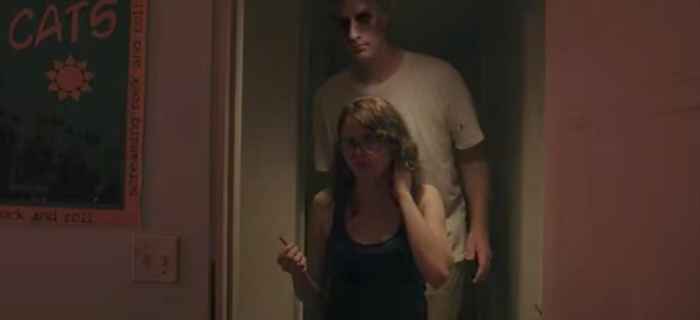
The affected are often related to red because they are closer to adulthood. The first victim of the monster is wearing red heels which feel out of place and draw attention. Jay’s nails are always bright red and undamaged. The kid that stalks Jay wears a red jacket and throws a red ball at her window. At the beginning, Hugh is wearing red. This is also seen when Paul and Jay are on the couch. Jay wears a blue blanket around her shoulders and a red blanket sits between them serving as a barrier. A major example is when the creature bleeds in the pool at the end. The red spreads through the blue pool and overtakes the color. All of these examples involve the affected characters. The use of red, as seen in these scenes, separates the affected from the unaffected. Red shows the affected as teens that are moving, either by force or by choice, towards maturity while the unaffected remain clinged to the protective blue of immaturity.
The narrative of the affected is almost always shown through Jay. Her friends appear comfortable with their youthful lives, but she is tormented by hers. The film does not explain this narrative, but rather shows it through quick images and subtle repetition. Both the affected and unaffected fear adulthood, but the affected see it as the better of two evils. Jay is in constant battle over whether to retain her immaturity or to grow up. The creature creates this dilemma by promising death while also bringing about the “return of the repressed,” as Robin Wood calls it. The dug up repression of the affected is far worse than that of the unaffected. While the unaffected deal with the repression of what could happen, the affected see the their repression of what has already happened.
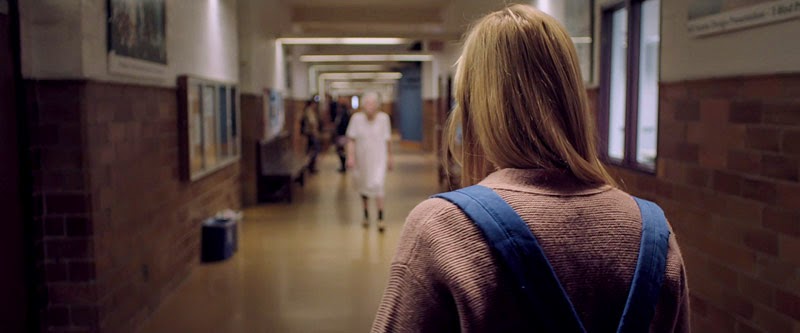
The creature communicates this repression to Jay through its appearance which only the affected can see. Over the course of the film, the creature, to Jay, takes the form of a naked woman, an old lady, a rape victim, a tall man, Yara, a child, a naked old man, and a middle aged man. The first woman and the tall man seem to serve gimmicky roles; the woman establishing the creature and the tall man being objectively scary. The others, however, can be directly connected to Jay’s past and personal fears. The old lady symbolizes Jay’s basic fear of mortality. This is reinforced by the fact that this scene precedes the Old Maid scene. The rape victim can quite obviously be the embodiment of the fear of rape because Jay is a girl and is probably scared of rape. The creature appearing as Yara on the beach could mean either that Jay is jealous of her or that she has had sexual feelings towards her that have been repressed. The child she sees is the same child that stalks her by throwing his rubber ball at her window and watching her from his bike. This could mean she fears him or the idea of a voyeur. The naked old man on the roof, when compared to the picture of Jay and her grandparents that is focused on earlier, strongly resembles Jay’s grandfather. This could imply that she was abused, either physically or sexually, by her grandfather when she was younger. The creature’s final form is a middle aged man. Since the only one of Jay’s parents shown is her mom and because the only middle aged men shown are police officers, this final form could be Jay’s father. This makes sense because her father is not involved in her life and could either be dead or divorced from her mother for cheating on her or even for abusing them. All of these forms are what Jay would least like the creature to look like. This makes her narrative and experience of the creature far scarier. She cannot retreat to her childhood, like the others, because the creature makes her antagonize it.
Since Jay cannot find safety in her childhood, she instead seeks out water for safety. The film includes water in many scenes, especially when Jay is, or appears to be, safe from the creature. The first victim of the creature runs to a beach before she is killed which establishes water as a safety mechanism early on. Jay is first seen floating in a pool and appears safe in a state of serenity. While in this pool, an ant crawls on her arm and she drops it into the water, slowly killing it. This could represent her immaturity that she still has, because she does not give the ant much thought. Conversely, this could also be an example of Jay leaving her youth and leaning towards maturity because she purposely disregards the ant’s life. Regardless, this scene sets her apart from her friends because she is outside swimming, while they are inside on a couch watching a movie. When Hugh and Jay go on their second date, Hugh takes her by water and she feels safe enough to have sex with him. When Jay is shocked by the rubber ball hitting her window, she moves to drink water from the sink; another example of her seeking water as safety. When the creature first enters her house, Jay yells at her friends, “I need water!” With no explanation, water is what she sees as her priority in the moment when the creature has found her. The gang also retreats to a beach to get away from the creature. The image of water as an escape from the creature and from growing up is made evident by its consistent presence in the film.
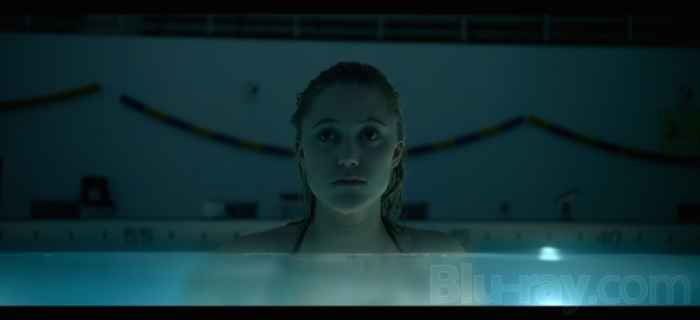
The safety of this water is unfortunately limited. After Greg, who symbolized Jay’s protection by having blue and water on his t-shirt, dies, the creature’s influence successfully convinces Jay that her only option is to pass on the curse. This symbolizes her decision to pursue adulthood by giving into her repressed sexual feelings and evading her past. She immediately goes back to the beach, but this time she swims out to a group of boys on a boat. A quick cut from the boat to her driving, covered in water, implies that she had sex with at least one of those boys. This event finalizes her decision to leave youth for good. When she returns home, she finds that her swimming pool has been broken and all of the water has drained, though the reason is unknown. She decides to use water to destroy the creature rather than hide from it. She hatches a plan to lure it to the high school swimming pool and electrify it with appliances. Though they only stop the creature for a short while, the final scenes of the film are set in rain. This display of nature providing water around Jay shows that she has successfully grown up and feels comfortable that way, despite the still impending danger of the creature. Symbolically, she is not scared of being an adult and, separated from her youth, no longer fears death.
Other than water, the film uses small details and Jay’s repressed sexuality to show her path to maturity. Throughout the film, the teenagers experience a level of independence they did not previously know which is caused by them having to deal with the creature. A clear example of this is the food and the pill in Jay’s room. After her bad date with Hugh, Jay is left a plate of food with a pill and some water from her mother which she refuses to take. Later, after a few run-ins with the creature, they are in the bedroom and the camera quickly pans over the food. Upon inspection, the food has not been touched and has faint signs of mold. The pill, however, is not there, implying that Jay took it, but on her own accord. Rather than have her mom force it, she self-prescribes it. She is showing signs that she does not need her mother to take care of her. Jay also enjoys plants and flowers. She toys with a small flower after having sex with Hugh. This changes, however, after she is affected by the curse. When she runs into Hugh after he ditches her back at her house, she sits, with her friends, in his backyard. Instead of listening to him, she tears pieces of grass and lines them up on her knee. There is something contradictory about this. Her act is inherently childish, but her treatment of nature is more destructive than when she caressed the flower. In Robin Wood’s essay, he describes the first form of repression, in horror, as sexual energy. This is important to the film because the creature’s curse is both caused and relieved through sex. Jay states that she has already had sex before by telling Paul that she had sex with Greg earlier on in High School. Jay is presented as sexually active, however her desire to have sex becomes distorted. After being affected, she fears sex and desires it for the same reason: passing on the curse. Wood describes the childhood repression of the desire of sex, specifically outside of marriage, as one of the major examples of repression in modern culture. Through returning this repressed sexual energy to Jay, the creature gets her to have sex with Greg and with the boys on the boat; both things she probably did not want to do. Wood’s essay also relates this repressed sexual energy to creativity. This could explain why the creature is capable of taking on the shape of whatever you fear to see. It is scary, but it is also a form of expression.
The seemingly unified narrative of It Follows is subtly dichotomized. However, this positively affects the film. The tragic events, that befall these teenagers, and the concept of youth take on new meanings and levels of horror when the perspective is changed from one character to another. The cinematography creates opportunities for one to gather the pieces to complete the puzzles of the film. One can be guided by the visual and auditory elements of the film in the right direction to feel the adolescent struggle of the characters and even think of their own youth. Unfortunately, some of the details that appear, “on-the-nose,” can distract one from exploring the meat of the film. Ultimately, if one does not find this film scary, they should watch it again.
What do you think? Leave a comment.











Not knowing the time period this was supposed to be set in drove me crazy with this movie. I’m guessing late 1990’s or early 2000’s. No cell phones but younger sister has some type of clam phone or something. Cars are old 1980’s predominantly, but in this opening scene you see much newer cars. In the distance there’s a Honda CR V that’s at least a 2012, perhaps this opening scene is set in the future to most of the movie.
The director stated he purposely made the time period vague to cause the audience to feel unease. i’m not sure if it was unease i felt as much as annoyance, because when i went to see it, that was the first thing my boyfriend pointed out, and then for the rest of the movie, i was trying decide what time period it was set in.
It’s suppose to be the near future.
This sounds like the movie drag me to hell -pass the curse on.
Drag Me To Hell wasn’t really based on that premise though, was it? It was a single curse, placed on the young banker. If it morphed into something you could pass on later on, that wasn’t the point.
The point was that she had acted selfishly in denying the old woman what she wanted, and was punished for it. Not that someone had passed on a curse to her.
I think the follower is a metaphor for urban decay following the withdrawal of the state.
What?
It’s one of those movies that follows you out of the cinema – you become hyper aware of anyone walking on their own in the middle distance.
A terrific film that I want to see again.
No one else seems to think this, but isn’t the thing that the “passing it on” doesn’t really work, hence greg/hugh(?) didn’t lose the thing even though he’d passed it on…? (I thought it was like that African rumour you hear about: you can get rid of AIDS by having sex with a virgin. A blatantly untrue rumour believed in if are desperate enough. I might be reading too much into this…)
With Greg I assumed he’d passed it onto that unsuspecting brunette but hadn’t warned her. I’m guessing she got killed and it passed back down the line to put him at risk.
As for the character building, yeah, it’s not exactly in depth but they’re still likeable enough, hanging around, doing relatively fuck all.
Going on a road trip to look after their probably insane friend/sister made me root for them a little more as well.
Interesting article, I enjoyed the point you made about the various stalkers being points of ‘repression’ for Jay, things that are plausibly in her future. Also the point regarding the symbolic usage of water throughout the film! I did think that the “probably scared of rape” comment could be rephrased – it goes without saying that no one wants to be raped, so it’s sort of a weird inclusion, to me. Just a small wording issue.
You’re absolutely right. I should’ve spotted that wording. Thank you so much for the feedback!
It Follows was waaaaaay over-hyped.
It Follows was OK, but not scary. But it had some really odd flaws: there was no logical reason to tie the girl up, for example. The various girls running round in underwear and high heels like a Benny Hill show was wierd, I assume it’s been written off as a nod at horror movie tropes but … It wasn’t really, was it? It was non ironic objectification of women. The era it was supposed to be set in. The strange shell e-reader in a film without mobile phones. The parents. The illogical assorted shapes assumed by the monster. It’s not a massive surprise that, given indulgence, the person who made It Follows should turn out something crap.
It is actually best when nothing is happening, the sense of dread always lingering. The scares are also clever with the jump-shocks and “It” rarely appearing in the same scene. Of course it’s a little silly (what horror film isn’t?!) but it satisfyingly plays on a real life everyday situation. Is that person following me?
I saw this last night, and am completely baffled by all the great praise – okay, so it nods to horror films of the past etc, but, honestly, the ONLY criterion that matters for horror films is if they are actually scary! Which this was not. At all. I wasn’t scared during the film, I wasn’t scared when I went to bed. So it’s a monumental fail.
The horror genre has been letting me down big time lately. Maybe it’s my age…
Must be my age too, just saw it and could not stop looking at my watch. Boring, uninteresting characters, absolutely lacking tension and scares. And when evil finally manifests itself it does so with all the randomness of a prank straight out of ‘Jackass’.
I had a nightmare last night so I suppose horror is subjective.
Every now and then something comes along and gives the horror genre a good kick, usually once we’ve had the nth degradation of an original, successful film. There sure have been a lot of possessions and demons – which usually have a name, a motive, and are in some way vulnerable to attack or exorcism – and a gradual increase in volume of the cliched screeching metal sound effect that tells you to jump. So dull. So rote.
This film provides one of those much needed kicks. Thank you for the analysis.
I was extremely disappointed by this film. As my viewing companion said, if this passes for good horror, the genre is in a bad place. Yes, the premise is interesting but I knew too much about it before the movie started. There are interesting things happening in parts, but I didn’t really care for the characters – it’s a hard ask to engage with their relationships when one of the tropes that is played with is entirely unbelievable reactions in crucial moments. The nemesis is under explored, and though this is deliberate, I feel several tricks were missed.
I really wanted to like this movie. Outside of the cinematography and soundtrack there wasn’t much to like about it. The build up is nice, but there is no payoff, at least nothing satisfying. It’s also sorely lacking in any scares or tension. But still, that cinematography and that soundtrack! Great stuff.
Here’s my interpretation of the film. The “thing” is actually the social stigma and reputation that follows you after having casual sex. It can come from anyone, from random strangers to your own parents. In other words, once someone thinks of you as promiscuous, sooner or later everyone else will. The need to “pass it” to someone else comes from the fact that now they are classified as “slutty”. The gossip now turns to them. While I was watching the movie I got really annoyed at how unsubtle the director was. The “thing” would always appear after a moment of sexual tension, such as Jay and Paul sitting together on the couch, reminiscing of their first kiss. It’s obvious that Paul is attracted to Jay. Every time a scene like this would occur, “it” would appear. Jay is by no means a slut, made obvious by her one piece bathing suit. She’s even on the prudish side of things. That makes her feel even more guilty about having slept with a guy she doesn’t really know (they’ve only dated a few times). Thus, it (the stigma) follows her around. The same can be said of Hugh, who got it from a one night stand. Noone would ever pass it on mischievously to someone they love, since it would bring them harm. “It” can only be passed through casual sex, just as stigma is never passed for sleeping with your boyfriend/girlfriend. The only time Jay can feel comfortable from “it”, is at the end of the movie, when Paul, who is truly in love with her, receives it. Since it was true love what made them have sex, they can feel safe around each other. In the final scene, they are seen holding hands, suggesting they are a couple now. While “it” may be following them, they no longer feel threatened. Seeing “it” as social stigma also helps understand why it never dies: criticism will move on to the next guy, but we will never live in a society where social stigma ceases to exist.
Sometimes a cigar is just a cigar. I love metaphor in stories, but I found this one didn’t need it. The creature was very literal, escaping it was very literal, and the deaths were very literal.
I would never have thought of this film in this way – thank you so much 🙂
I watched it tonight. It’s corny, but I thought the music was great and I enjoyed the camera work, I’m a bit confused on how “it” works. Fun movie though. The constant use of zoom lenses also added a real eerie feel as if someone from afar (it) was watching.
Very stylish, very effective, but not a perfect film. For me it was a bit lacking in character building. I loved the conceit and the timelessness of it all, the stylishness of its sounds and visuals, and I really jumped, but I would have liked more character building (although I liked that the kids were hanging out doing nothing, as I did).
Though It Follows had a nice atmosphere and some good special FX, it was pretty empty as a film (just a sort of teen VD-paranoia version of Ring or Night of the Demon), while Silver Lake, their new film, is amusing and charming about a surreal young LA with none of the Lynch pretensions.
Not perfect but genuinely tense/doom laden. Loved the aesthetic of the movie as well. Looks good and sounds even better.
Great concept, soundtrack and made a nice change from the quiet, quiet LOUD horror of recent years
It’s an eerie story about an entity that can take the form of any individual it desires and haunts people who have sex with the intention of killing everyone who’s ever had sex.
Really enjoyed this movie. It was fresh with believable characters and an art house aesthetic.
this movie was about abuse. her father being the one who was the last one we saw but it was being hidden that ws her father til the end.
All the best horror is allegorical to very basic fears and it’s fun to go back and watch these movies again to see the foundation of the scares. I remember watching Aliens with a friend last Halloween and she asked why there’s water everywhere. I was like “…. You don’t get it? …. The Alien is intentionally extremely phallic and it’s chasing Weaver around in her underwear down long wet hallways to either pierce her with its mouth tongue or forcefully impregnate her.” My friend was like “O_O OMG….” and I said “Yeah, now that you see it you will never unsee it.”
Full of cliche, poorly written and just a wholly underwhelming.
Deep thoughts indeed. Great analysis of a movie.
I feel like it was a miss step not include something about the heavy implication of trauma from sexual encounters. It’s evident that Jay has suffered some sort of trauma that is being relived through lingering consequences of having sex. The “monster” could be seen as a parallel to an unwanted pregnancy, severe STI, or just plainly being taken advantage of through deception. All of these have the potential to take control of someone’s life and in a sense, hunt them down.
A good essay on a movie I enjoyed.
David Robert Mitchell has yet to make a film that really comes together narratively. Still, he is clearly a directorial force to be taken seriously. His 2018 feature, Under the Silver Lake, is even more ambient and stylish.